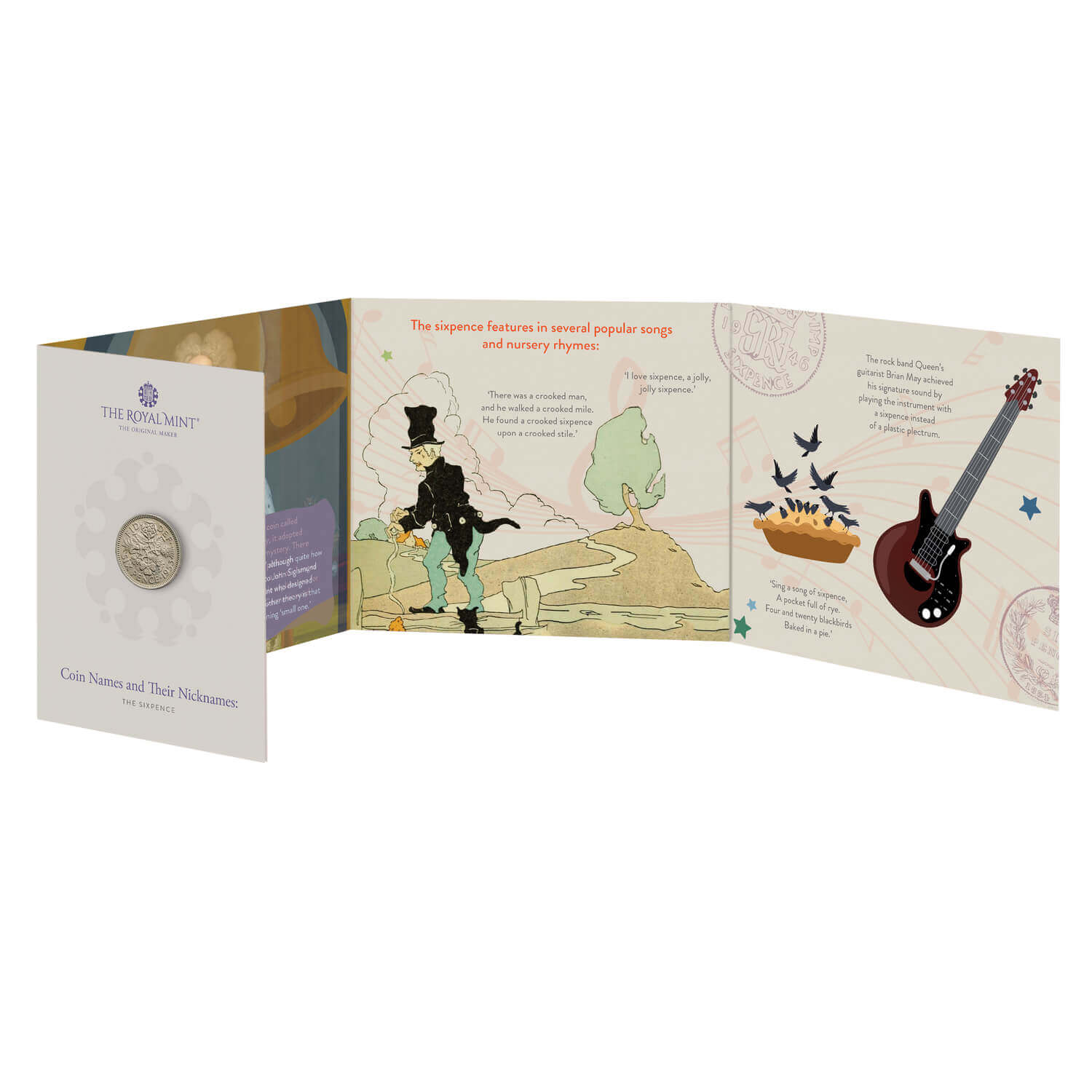



Coin Names and Their Nicknames: The Sixpence
Extremely Fine Condition
Price: £10.00
Product code: HISTAN
- Own a pristine example of one of the nation’s best-loved pre-decimal coins
- Presented in vibrant packaging that reveals the story behind the coin’s unusual nickname
- A great gift to inspire a lifelong love of coin collecting
- Build a fascinating collection of pre-decimal British coinage
- Introduced in 1551, the sixpence eventually acquired the friendly nickname ‘tanner’. One of the most popular pre-decimal coins, it remains an integral part of many of our best-loved good luck traditions.
You might also be interested in
Throughout the centuries, the names of many UK coins have become part of our everyday language. This exciting range delves into the histories of popular pre-decimal circulating coins and reveals the origins of the names by which we commonly know them.
Coin Names and Their Nicknames: The Sixpence
First issued during the mid sixteenth century, the sixpence had a value of 2.5p following decimalisation (1971) and could be used until 1980 when it was finally demonetised. Commonly called the ‘tanner,’ it is included in our range of UK coins with popular nicknames.
The ‘Tanner’
Eventually, the sixpence acquired the friendly nickname ‘tanner’ although quite how this came about is something of a mystery. Some attribute it to John Sigismund Tanner (1705–75), a former Chief Engraver of The Royal Mint who designed a sixpence during the reign of George II (r. 1727–60), whilst another theory is that the name comes from the Anglo-Romani word ‘taw no’ meaning ‘small one’.
A Charm for Good Luck
Introduced in 1551 during the reign of Edward VI, the sixpence was a mainstay of national coinage for more than 400 years until it was demonetised in 1980. Despite disappearing from circulation, it remains part of many long-standing traditions that are said to bring good luck. Most notably, sixpences are often slipped into a bride’s shoe and stirred into Christmas puddings on the last Sunday before Advent.
Did you know?
Sixpences have long been thought to hold magical properties in popular myth. When it was believed people could turn into animals, it was said that young women who turned into hares could only be shot with silver bullets made from sixpences.
Specification
| Specification | Value |
|---|---|
| Alloy | Cupro-Nickel |
| Weight | 2.83 g |
| Diameter | 19.41mm |
| Quality | Circulating |
| Year | 1860-1980 |
| Specification | Value |
|---|




